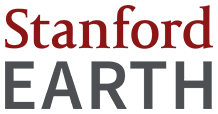2016 Stanford Earth Summer Undergraduate Research Program
The application for the 2016 SESUR program will be available on January 11 and is due February 26.
To learn more about the Stanford Earth Summer Undergraduate Research (SESUR) Program:
- Attend an info session to ask questions and talk to former program participants! There will be two sessions: November 19 or January 19, both at 12PM in Geocorner 114 (download the 2015 presentation here)
- Download a flyer with information.
- Watch a video about the program.
Click here to view some of the projects from summer 2015. The list for 2016 will be posted in January. Remember, you are NOT limited to only the posted projects. We encourage you to reach out directly to faculty if you are interested in their research.
The School of Earth, Energy & Environmental Sciences will be offering approximately 27 Stanford students stipends of up to $6400 to conduct research over the summer of 2016. Funding priority goes to current and prospective students in any of the departments and programs within the School of Earth, Energy & Environmental Sciences who have not yet received departmental funding. We are primarily interested in funding freshmen and sophomores, though juniors and seniors in their first research experience will be considered. Students who wish to conduct Honors research should apply for a Major Grant directly from Undergraduate Advising and Research.
Students may apply to work with any faculty member in the School of Earth, Energy & Environmental Sciences, which includes the departments of Energy Resources Engineering, Environmental Earth System Science, Geophysics, and Geological and Environmental Sciences. Faculty in the Earth Systems Program who have an appointment in the School of Earth, Energy & Environmental Sciences are also eligible to serve as advisors. You can browse through Potential Projects, or browse all faculty and their research interests. If you are interested in working with someone you see there, you can contact him or her directly.
How to Apply
In order to apply, you will fill out the online application form (look for the link on the right side menu above). The form will ask you some basic questions, and prompt you to upload your project proposal. The deadline for submission is 5:00 pm on Friday, February 26, 2016. You will develop the project proposal with a faculty member (and likely a graduate student as well) who will act as your advisor(s). Your proposed faculty research advisor must approve your application: once you submit it online, he or she will receive an email notification asking for approval.
The proposal
Your proposal should not exceed 5 pages total, and must include:
- Basic information: The title of your proposed project, your name, class, and major, and the name(s) of your primary faculty advisor and grad student advisor, if applicable.
- A description of the proposed project: This section should comprise the bulk of your proposal. What is the broad question you will be addressing? How exactly will you address it? What are the objectives of the research? What methods will you use?
- A tentative work plan: When will you do the work you’ve proposed? When do you plan to be in the field? If you need to collect/prepare samples for lab analysis, when will you work in the lab? This section should not be written in paragraph form - a bulleted list or table is preferred.
- A tentative budget: Please format this as a table. The maximum allowable stipend is $6400, which breaks down to $640 per 40-hour week for 10 weeks (you may apply for any portion thereof). In addition, you may request up to $500 in laboratory analysis, equipment, or other expenses. The total budget may not exceed $6900.
Reviewing the examples of past successful proposals, provided below, may prove useful for helping you think about how to construct your own proposal.
Proposals are due by 5:00 pm, Friday, February 26. You and your advisor will be notified of funding prior to spring break.
If you are accepted…
Students who participate in the 2016 Summer Undergraduate Research Program are required to:
- Enroll in Earth 100: Research Preparation (1 unit) during spring quarter. The course includes several activities to help you create a successful summer research experience.
- Attend a weekly lunch seminar series during the summer (when on campus), which will include lectures by faculty and workshops on poster-making and oral presentations.
- Participate in SURPS in the following fall or spring quarter by submitting an abstract and presenting a poster.
- Participate in the Stanford Earth Undergraduate Research Symposium in the Fall or the Stanford Earth Research Review in the Spring by giving a poster or short oral presentation about your work.
- Complete program evaluations at the mid-point and end of your research.
- In addition, you will be encouraged to maintain a research blog during the summer
Questions?
For additional information, please contact Sara Cina, Undergraduate Program Director, at (650) 724-8899 or saracina@stanford.edu.



